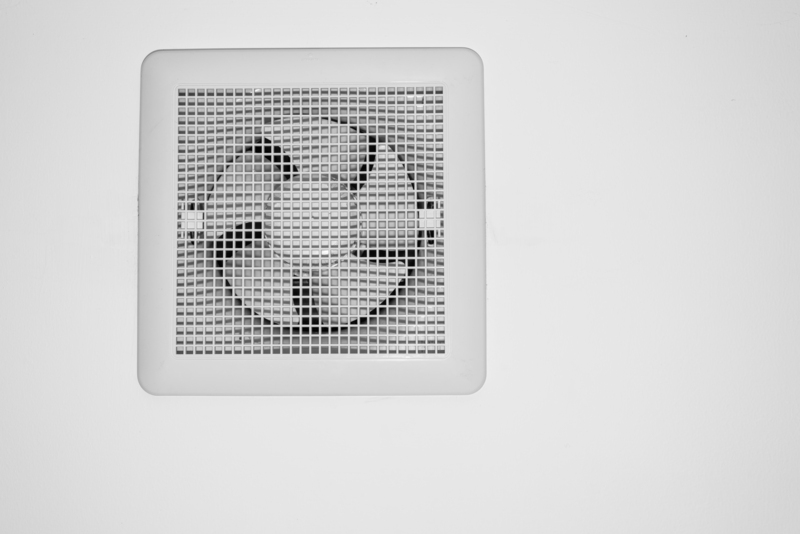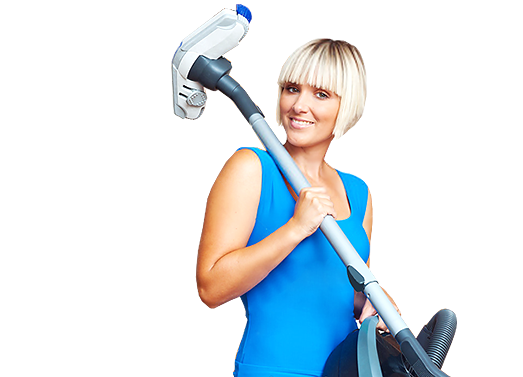Breathe easy as you learn to manage dust and allergens at home effectively
Posted on 04/06/2025
Breathe Easy as You Learn to Manage Dust and Allergens at Home Effectively
Living in a cozy home is wonderful--until you notice sneezing fits, itchy eyes, or that stubborn layer of dust no matter how hard you clean. Managing dust and allergens at home is crucial for a healthy living environment, especially for families with allergies, asthma, or respiratory issues. Let's explore not only why controlling dust and allergens is essential but also the most effective, actionable ways to keep your home fresh, clean, and allergy-friendly. Read on to discover tried-and-tested strategies to breathe easy in your space.
Understanding Dust and Allergens: Why Are They Harmful?
Dust isn't just unsightly--it's a complex combination of tiny particles such as dead skin cells, pet dander, pollen, textile fibers, and microscopic insects like dust mites. Allergens are typically substances found within dust or elsewhere in your home that can provoke allergic reactions in sensitive individuals.
- Dust mites: Microscopic pests thriving in warm, humid environments--beds, carpets, and upholstered furniture.
- Pollen: Seasonal culprit that enters through open windows and vents, triggering allergy symptoms.
- Pet dander: Tiny particles shed from fur, feathers, or skin of animals. A common household allergen.
- Mold spores: Can proliferate in damp areas like bathrooms, basements, and kitchens.
Continuous exposure to these indoor allergens can lead to incessant sneezing, watery eyes, coughing, shortness of breath, and in some cases, serious health concerns for asthma sufferers.

Benefits of Managing Dust and Allergens at Home
- Improved air quality leads to fewer respiratory issues and overall better health.
- Better sleep--reduced allergy symptoms contribute to uninterrupted rest.
- Enhanced comfort for everyone in your home.
- Greater cleanliness extends the lifespan of furniture, appliances, and HVAC systems.
Practical Ways to Manage Dust and Allergens at Home
Develop a Smart Cleaning Routine
A regular cleaning schedule is your first defense against dust accumulation. Here's how to optimize your efforts:
-
Vacuum Frequently:
Use a vacuum with a HEPA filter--these capture up to 99.97% of tiny particles. Focus on high-traffic areas, under beds, and upholstery. Vacuum carpets and rugs at least twice a week. -
Damp Dust Surfaces:
Dry dusting can stir particles into the air. Instead, use a damp microfiber cloth to wipe surfaces, reaching into corners and crevices where dust loves to settle. -
Launder Bedding Regularly:
Wash sheets, pillowcases, and blankets weekly in hot water. Don't forget to clean mattress protectors and comforters monthly. -
Declutter:
The more items you have on shelves or counters, the more surfaces there are for dust to collect. Minimalism isn't just stylish--it's smart for allergy management.
Tackle Hidden Dust Traps
- Behind and Under Furniture: Move heavy furniture occasionally to clean underneath and behind.
- Ceiling Fans & Light Fixtures: Dust can accumulate unnoticed overhead. Clean these locations at least monthly.
- Vents and Filters: HVAC ducts, range hoods, and air purifiers work efficiently when their filters are cleaned or replaced regularly.
Control Humidity for Allergens
Dust mites and mold thrive in damp, humid conditions. Keep your home's humidity level between 30% and 50%. Here's how:
- Use Dehumidifiers: Especially in basements, bathrooms, and other damp-prone areas.
- Ventilate Properly: Regularly open windows on dry days or use exhaust fans after showers and cooking.
- Fix Leaks Promptly: Address water leaks under sinks, behind appliances, or in basement walls to prevent mold growth.
Allergy-Proof Each Room in Your Home
Bedroom: Create Your Clean Sanctuary
As you learn to manage dust and allergens at home effectively, focus first on your bedroom.
- Invest in hypoallergenic bedding: Choose mattress and pillow covers that prevent dust mites from taking residence.
- Limit soft furnishings: Heavy drapes, extra throw pillows, and plush toys are all dust reservoirs. Opt for washable items and launder them frequently.
- Consider hard flooring: Carpets trap dust and allergens--hardwood, tile, or laminate is easier to keep allergen-free.
Living Room: Social and Allergen-Free
- Choose easy-clean furniture: Leather or vinyl surfaces don't hold onto dust like fabric sofas. If you love cushions, look for those with washable covers.
- Keep windows closed during high pollen seasons: Use air conditioning instead, with a clean HEPA filter.
- Use area rugs: If you have to use rugs, choose low-pile types and clean them weekly.
Kitchen: Allergy-Safe Meal Prep
- Control moisture: Good ventilation is crucial in the kitchen. Use your exhaust fan every time you cook.
- Seal food containers: Airtight containers deter pests and limit potential allergens.
- Check for mold: Regularly inspect under the sink, refrigerator drip pans, and inside cabinets.
Bathroom: Don't Let Mold Win
- Wipe down tiles and glass: Keep shower walls and glass doors dry to prevent mold and mildew.
- Run an exhaust fan or open a window: This helps remove excess humidity after every shower.
- Wash bath mats and towels weekly: Wet fabrics are breeding grounds for both mold and dust mites.
Choose the Right Tools to Manage Dust and Allergens at Home
-
HEPA Air Purifiers:
High-Efficiency Particulate Air (HEPA) filters are the gold standard. Place purifiers in bedrooms and living rooms for best results. -
Vacuum Cleaners with HEPA Filters:
These don't just suck up dust--they keep it from escaping back into your air. -
Microfiber Cloths:
These trap dust instead of pushing it into the air, unlike feather dusters or paper towels. -
Dehumidifiers and Humidity Monitors:
Stay proactive about keeping indoor humidity in check to reduce mold and mite growth.
Special Considerations for Pet Owners
If your furry friends are part of the family, keeping dust and allergens under control requires some extra effort.
- Groom pets regularly: Brushing outdoors reduces the amount of dander in your home.
- Bathe pets monthly: Consult with your vet for the best products and frequency.
- Keep pets off beds and upholstered furniture: Provide designated pet areas instead.
- Launder pet bedding: Wash their beds, blankets, and soft toys weekly.
Maintain Your Home's Ventilation and Filtration
- Change HVAC filters regularly--every 2-3 months or as recommended by the manufacturer.
- Install HEPA filters in your heating and cooling systems for improved dust and allergen control.
- Ensure air ducts are clean--have professionals inspect and clean them every few years.
Natural Ways to Tackle Household Allergens
If you prefer green cleaning options, try these natural ways to control dust and allergens:
-
Baking soda:
Sprinkle on carpets, wait 30 minutes, and vacuum to reduce odors and help lift dust. -
White vinegar:
Use as a non-toxic surface cleaner--kills mold spores and eliminates allergens. -
Essential oils:
Tea tree, eucalyptus, and lavender oils have antifungal properties. Add a drop to your cleaning water for a fresh scent and added mold defense. -
Houseplants (with caution):
Some plants can purify air, but avoid if you have mold allergies or struggle with plant soil management.
Consistent Monitoring: Track & Reduce Household Allergens
Monitoring air quality can help you effectively manage dust and allergens at home. Invest in an indoor air quality monitor to track particle and humidity levels. This data can guide your cleaning decisions and let you know when humidity is creeping too high or air filters need changing.
Seasonal Strategies for Dust and Allergen Management
- Spring: Pollen is at its peak. Keep windows closed, change clothing after being outdoors, and clean entryways frequently.
- Summer: Dust mites proliferate in humidity--run dehumidifiers, and keep bedding extra clean.
- Autumn: Falling leaves and mold can increase allergies. Clean gutters, use air purifiers, and regularly dust vents.
- Winter: Keep humidity optimal, change filters, and avoid using harsh chemical cleaners in sealed-up homes.
When to Seek Professional Help for Dust and Allergens
If, despite your best efforts, respiratory symptoms or allergic reactions persist, consult a medical professional. You may also consider:
- Professional cleaning services: Great for deep carpet, upholstery, or duct cleaning.
- Indoor environmental assessments: Professionals can test for mold, dust mite populations, and overall air quality.
- Allergy-proofing from specialists: If someone in your household suffers from severe allergies, an allergist or environmental specialist can tailor solutions specifically for your needs.

Breathe Easy: Small Changes, Big Impact
Effectively managing dust and allergens at home isn't about a spotless house--it's about creating a comfortable, healthy haven for everyone. Consistency is key: regular cleaning, managing humidity, mindful habits, and the right tools make all the difference. By using these practical strategies, you can truly breathe easy and enjoy the peace of mind a clean, allergen-controlled environment brings.
Remember, your journey to a fresher, more breathable home begins with just a few smart changes. Commit to a cleaning routine, invest in high-quality filters and air purifiers, and keep clutter at bay--and watch as your allergy symptoms diminish, leaving you free to relax, sleep, and live more comfortably.
Frequently Asked Questions on Managing Dust and Allergens at Home
-
How often should I change my air purifier filter?
Check manufacturer recommendations, but generally every 3-6 months for optimal air cleaning performance. -
Is it possible to be completely allergen-free?
No home is 100% allergen-free, but targeted steps can dramatically reduce allergen levels for improved quality of life. -
Do carpets make allergies worse?
Yes, carpets trap dust, pet dander, and pollen. Opt for hard floors or use washable area rugs and vacuum with a HEPA-filter regularly. -
Is a HEPA air purifier worth the investment?
Absolutely--especially if you suffer from allergies or asthma. HEPA filters trap ultrafine particulates missed by standard air filters.
By implementing these techniques and staying vigilant, you'll soon breathe easy as you learn to manage dust and allergens at home effectively. A cleaner, healthier home environment is within your reach--start today!




